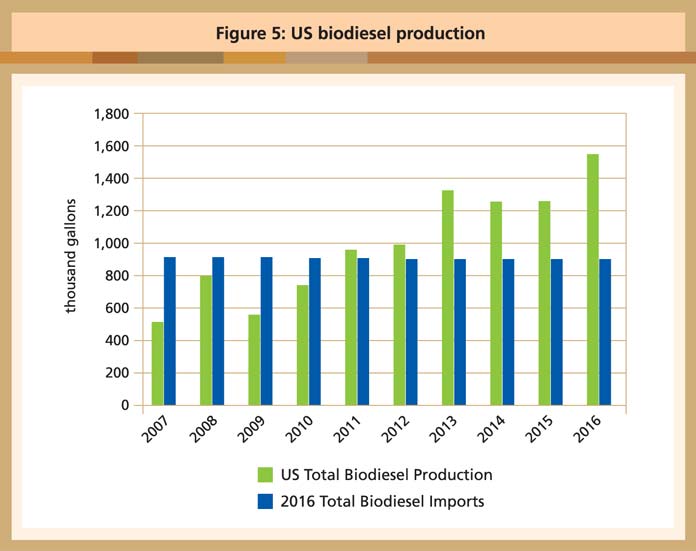



Biodiesel output
The EIA’s STEO shows methyl ester biodiesel production at 930 million gallons for January 2017, a considerable drop from December 2016 that can be attributed to the expiration of the biodiesel blenders’ tax credit at the end of last year.
The fate of the credit – whether it is reinstated, reinstated as a producer credit rather than a blender credit, or left expired – is caught up with the congressional effort on a comprehensive tax reform bill.
Prior to the Easter recess, there were private negotiations between key Republican and Democratic lawmakers in the House, the chamber where tax bills must originate; but the concept of the Border Adjustment Tax (BAT) is still a major roadblock to moving toward any kind of consensus on a reform bill.
Whether or not the BAT will be included in a tax overhaul bill must be settled before such legislation proceeds, and it is difficult to handicap the biodiesel credit until then. The credit has always been a catalyst to biodiesel production and producer margins. Without it, those margins are following seasonal patterns, but continue to trend below those last year.

Source: EIA, WPI
Biodiesel imports are also down dramatically. In January, there were 10.1 million gallons of methyl ester biodiesel from Argentina and 4 million gallons from Canada, as well as 11.5 million gallons of renewable diesel from Singapore, for a total of 25.6 million gallons. That compares to December when total imports were nearly 135 million gallons: 112 million gallons of methyl ester biodiesel and 23.4 million gallons of renewable diesel.
Overall imports in 2016 were more than 915 million gallons, including 693 million gallons of methyl ester biodiesel and 222 million gallons of renewable diesel. The 2016 import volume was greater than US domestic production in every year prior to 2011, and it nearly matched the domestic production of 2011 and 2012.
Last year’s record imports are the reason domestic biodiesel producers are seeking to change the tax credit to apply to production rather than to blending. In this form, foreign producers would not be able take advantage of it. However, blenders currently access the credit even by using foreign-produced biodiesel.